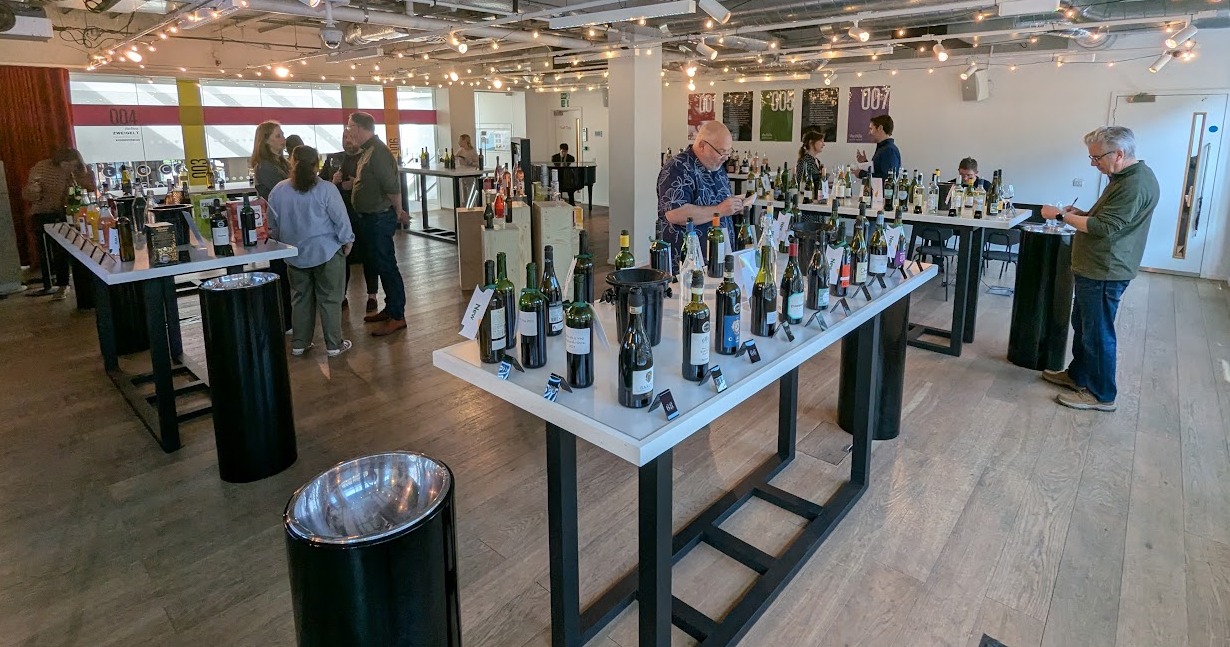
In April 2025, I was invited to the Morrisons Spring Summer Press Tasting in London, where around 100 wines were on show. A pianist added a touch of class to the event, playing gentle background music as we tasted our way through the selection.

Morrisons is showing a focus on sourcing quality wines from less obvious regions, aiming to offer strong value without sacrificing quality. A good example of this is the La Bellamente Pinot Grigio Blush NV from Moldova, mentioned further below, offering an acceptable rosé for only £6 and only £4.50 during 25% off promotion.
In light of the upcoming Extended Producer Responsibility charges, Morrisons is also exploring alternative formats. Own-label bag-in-box wines are part of the mix, as are canned offerings from well-known producers like Villa Maria and La Vieille Ferme.
There are the wines that particularly caught my attention:

The Best English Sparkling Wine NV, at 12% and £24, was a returning favourite from last year. While its ABV has dropped from 14% to 12%, it remains impressive. Made by the anonymous ‘Rolling Green Hills’ (likely Nyetimber), it is composed of 54% Chardonnay, 37% Pinot Noir and 9% Pinot Meunier, aged for over six years. The flavour is rich and layered, with notes of baked pastry, apple, butter and a subtle citrus edge. Creamy and persistent, it’s sweeter than the NV Nyetimber I recently reviewed.
La Bellamente Pinot Grigio Blush NV, 11% and £6, is 100% Pinot Grigio from Moldovan producer Asconi. It opens with strawberry and banana notes that may feel a bit artificial at first, but as you have more it settles into something rather palatable. It’s not pretending to be anything more than easy-drinking, dry and flavourful (rare for rosé). Vegan. Represents excellent value for the price.
Vitis Nostra Pinot Noir Rosé NV, 11% and £7.50, from Lombardy in Italy, is made from 85% Pinot Nero and 15% other local varieties. For just £1.50 more than the Bellamente, you get a rosé with more sophistication. Aromas of flowers and pear drop lead into a peachy, slightly sweet palate with added finesse. This is standout value at £7.50.
The Best Cote de Gascogne 2024, 11% and £7.50, is a bold and very zesty white made by Plaimont, blending 60% Colombard, 25% Sauvignon Blanc and 15% Gros Manseng. It offers a vivid tropical and citrus nose and the taste bursts with grapefruit, pineapple and sharp citrus notes. Its very high acidity adds serious freshness. The extreme intensity might perhaps be polarising, but this is one I thoroughly enjoyed.
Domaine du Courtillet Touraine Sauvignon Blanc 2023, 12% and £12, is vegan and 100% Sauvignon Blanc. It brings a riper, rounder profile compared to the Gascogne, thanks to lower acidity. Tropical fruit aromas and a slightly almondy mid-palate make this an ideal food wine, particularly suited to chicken.
The Best Gewurztraminer 2023, 12% and £10, from Alsace and made by Arthur Metz, delivers a textbook Gewurztraminer experience. The nose is packed with lychee and passion fruit, while the palate follows with mango, apricot and a touch of honey. It’s relatively sweet, long on the finish, and has a slightly exotic, almost Furmint-like character. Excellent quality for the price.
The Best New Zealand Marlborough Sauvignon Blanc 2024, 13% and £10, is produced by Kingsland Drinks. Comprising 95% Sauvignon Blanc and 5% other permitted varieties, this wine offers a classic grassy, tropical nose but adds depth with a musky, almost Muscat-like flavour. I asked and the 5% ‘other’ grape is, surprisingly, Riesling that contributes to the texture and a fuller mouthfeel. A clever twist on the classic Marlborough style.
The Best Chianti Superiore 2023, 13% and £9.50, from Tenute Piccini, blends 88% Sangiovese with 12% Merlot. The standout here is the aroma, very fruity with a hint of caramel. The palate is cherry and plum-forward, with a gentle sweetness and medium tannins. It’s approachable, charming and would pair brilliantly with pizza.
The Best Astado Toro Roble 2022, 14% and £12, is a new addition to Morrisons’ range, made from 100% Tinta de Toro, a local clone of Tempranillo. It shows a deep colour and expressive aromas of toffee, raisin and clove. The palate is full of dark fruit, blackberry, caramel, and it has a soft, round mouthfeel. While Toro wines can be very tannic, this one is surprisingly smooth and accessible. It was the only wine I couldn’t resist swallowing (I spit at tastings) and it was my favourite of the entire tasting.
Journey’s End Spekboom Syrah 2023, 14% and £11.75, from South Africa, offers a different take on Syrah. Made from 100% Syrah, it has a smoky character on both the nose and palate, likely thanks to its time in French oak. With rich dark fruit and medium tannins, it’s a bold yet balanced wine.
From the upcoming New Block Series, I also had an early preview of a few forthcoming wines, some still without final labels. One that stood out was the Viñedo en Badarán Rioja white from La Rioja Alta. This intriguing blend features old-vine Viura and Malvasia with Garnacha Blanca, Tempranillo Blanco, Maturana Blanca and Chardonnay. It delivered lovely flavours of white peach and apricot with a subtle touch of vanilla from restrained oak. One to look out for soon.
This tasting offered the strongest line-up of rosés I’ve seen so far this season, with noticeably more flavour than the usual bland offerings. The whites were particularly expressive, and there were a couple of reds, especially the Toro, that stood out for their depth and value. Morrisons is clearly on the front foot, bringing in interesting wines from alternative regions while keeping prices accessible.














